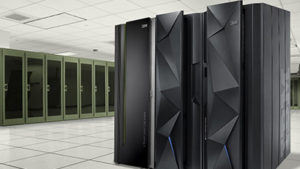
Cockroach Entices High-End Legacy Workloads with v23.2

The folks at Cockroach Labs have dedicated a decade of their lives to building a distributed relational database that can handle the global data storage and serving needs of the biggest companies in the world. While the database can’t yet fully replace everything that high-end legacy systems are doing, it crept ever closer with today’s launch of CockroachDB 23.2.
Spencer Kimball and Peter Mattis co-founded Cockroach Labs back in 2014 to tackle a big, hairy technical problem: building a globally distributed relational database that runs on commodity hardware. The former Google employees were inspired by several projects at the tech giant, including BigTable, which spurred development of multiple NoSQL databases, and Spanner, the relational database that uses atomic clocks to keep global transactions in synch.
Kimball and Mattis eventually succeeded in using software (i.e. consensus algorithms) to solve the tricky problem of maintaining ACID compliance for database transactions running on server nodes that are thousands of miles apart, where network latency becomes a major hurdle to consistency and usability. The work gave CockroachDB entry into a very exclusive club of databases, one occupied by Google Spanner as well the likes of Oracle and IBM.
Since it rolled out its first products and services built on CockroachDB, Cockroach Labs has always targeted the high end of the database market, which tends to be large financial services firms, retailers, and tech firms. Companies that want to maintain a single database for global operations or that have very low tolerances for downtime are good candidates for CockroachDB, an open source database that’s largely based on Postgres but with some added capability and complexity to handle distributed reads and writes.
“Big companies just care at a far different level about what Cockroach brings to the table than these small companies do,” Kimball, who is the CEO, told Datanami at the AWS re:Invent 2023 conference in late November. “Small companies hope to have to scale, but it’s only aspirational. Eventually they might move to Cockroach or something like that. The big companies, they have to start at Cockroach, because they’re moving, in some cases off of mainframes, a very reliable piece of technology with an incredible legacy.”
That puts Cockroach in direct competition with existing tech stacks at large companies, which is heavily weighted toward Oracle RAC (Redundant Array of Clusters) and IBM System z mainframe and IBM i midrange systems (formerly AS/400). Kimball is certainly eager to convince these customers to move to CockroachDB, which will open up new capabilities for them. But while many tech CEOs are eager to bash so-called legacy systems as outdated dinosaurs that should be put out to pasture, Kimball approaches these accounts with far more humility.
“Cockroach is not as good as a mainframe in some respects,” says Kimball, a 2020 Datanami Person to Watch. “In the years past, they’ve forgiven Cockroach for various shortcomings because they wanted our other capability, whether it was scale or region survivability or that kind of thing. But they won’t wait forever! So it’s a constant effort to come up to speed, because these legacy systems, as much as they have limitations that they’re trying to correct for, boy they have an incredible surface areas that’s extraordinarily well-tested and bullet-proof. I never denigrate those old systems. They’re extraordinarily good pieces of software with huge amounts of evolutionary pressure to perform well. So that’s our challenge, because we have immense responsibility for the use cases we’re already serving.”
Today’s launch of CockroachDB 23.2 brings the database a bit closer to matching what customers are accustomed to in those existing data platforms. For starters, the database’s new Physical Cluster Replication function helps assure customers that their data will stay protected.
CockroachDB was originally designed to protect data across three or more regions. However, many companies on legacy tech designed their systems around the concept of a primary and a secondary machine, with data being continuously replicated. In the event of a disaster, a failover can be ordered, shifting workload to the secondary. With Physical cluster replication, CockroachDB can now provide better data reliability for two-node CockroachDB setups.
It’s all about making Cockroach DB adaptable to different customer needs, Kimball says. “For each use case, you want to have these different strategies available, because every use case has different requirements,” he says. “If you want to control for cost, this would be an example where this acutely helps quite a bit.”
Stored procedures have also been rebuilt in CockroachDB 23.2. The company says that the PL/pgSQL language can now take advantage of CockroachDB’s distributed execution engine, which means users can process large amounts of transactional data in parallel, the company says.
This release also brings support for read committed, which is the default isolation level in Postgres. By supporting this feature, which is only in preview, it will allow developers to move high concurrency Postgres apps to CockroachDB without requiring additional application-level retries, the company says.
Finally, CockroachDB 23.2 introduces something called the MOLT Live Migration Service, or LMS. MOLT, which stands for “migrate off legacy technology,” provides additional tooling designed to help teams “navigate the tradeoff between downtime, latency impact, and data integrity” among the legacy system they’re migrating away from, which can help to reduce risks and costs, the company says.
The LMS offering currently supports MySQL, Postgres, and other CockroachDB instances that may be running on-prem, self-hosted in the cloud, or running as a serverless instance in Cockroach Labs’ cloud.
While LMS doesn’t support legacy Db2 or Oracle RAC, the big customers spending billions to maintain those systems are never far from Kimball’s mind.
“For better or worse, they’re kind of aging out, just the people that can even run it,” Kimball says. “But they need those same kind of capabilities. They simply must have business continuity. If a small company has an outage of half a day, you kind of shrug a little bit. ‘Okay, our users are inconvenienced. But it’s not going to make the front page of the Wall Street Journal.
“If you’re a big broker-trader and you have peoples 401(k)s and you have an outage, oooph! That’s just not acceptable. So that’s the nexus of the opportunity for Cockroach.”
Related Items:
Cockroach Labs To Announce Updates To Cockroachdb Dedicated And Serverless
Database Futures with a Cockroach Labs Co-Founder
Cockroach Labs Is the Latest Data Unicorn





























